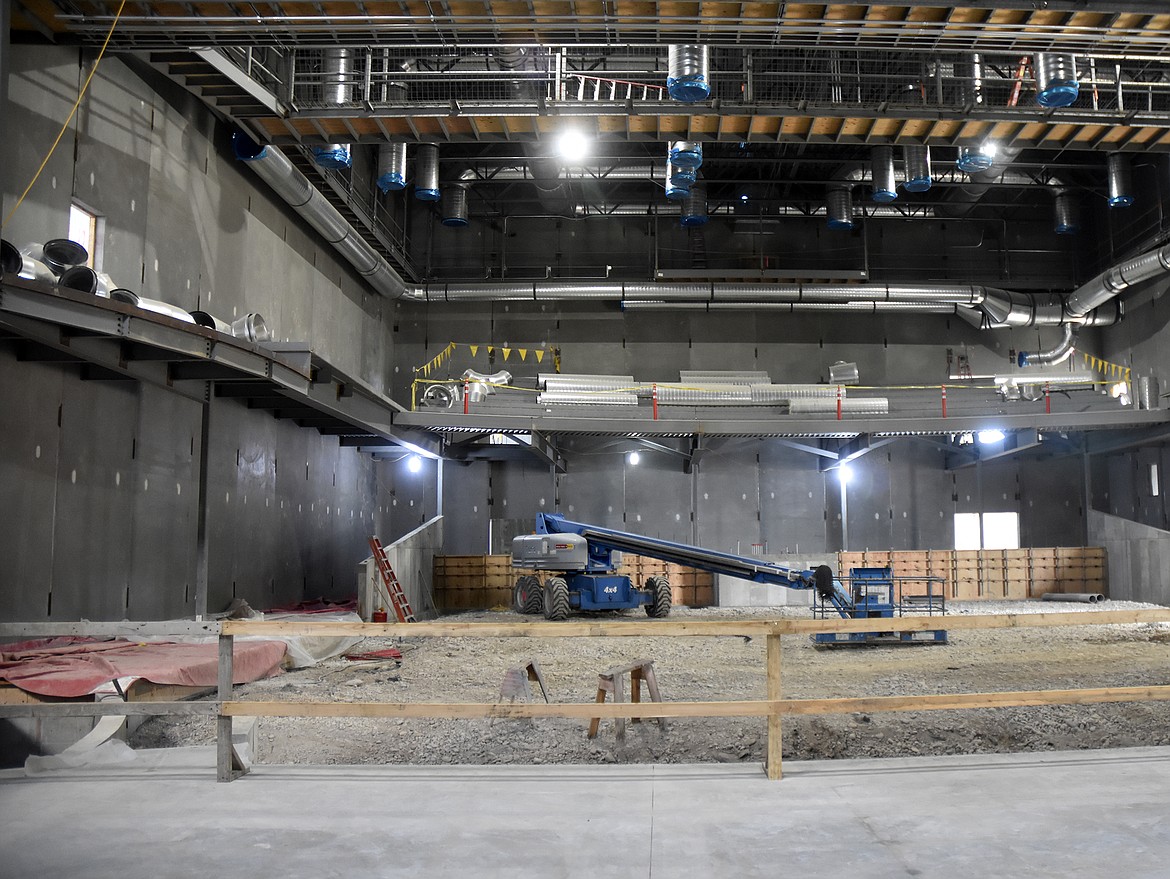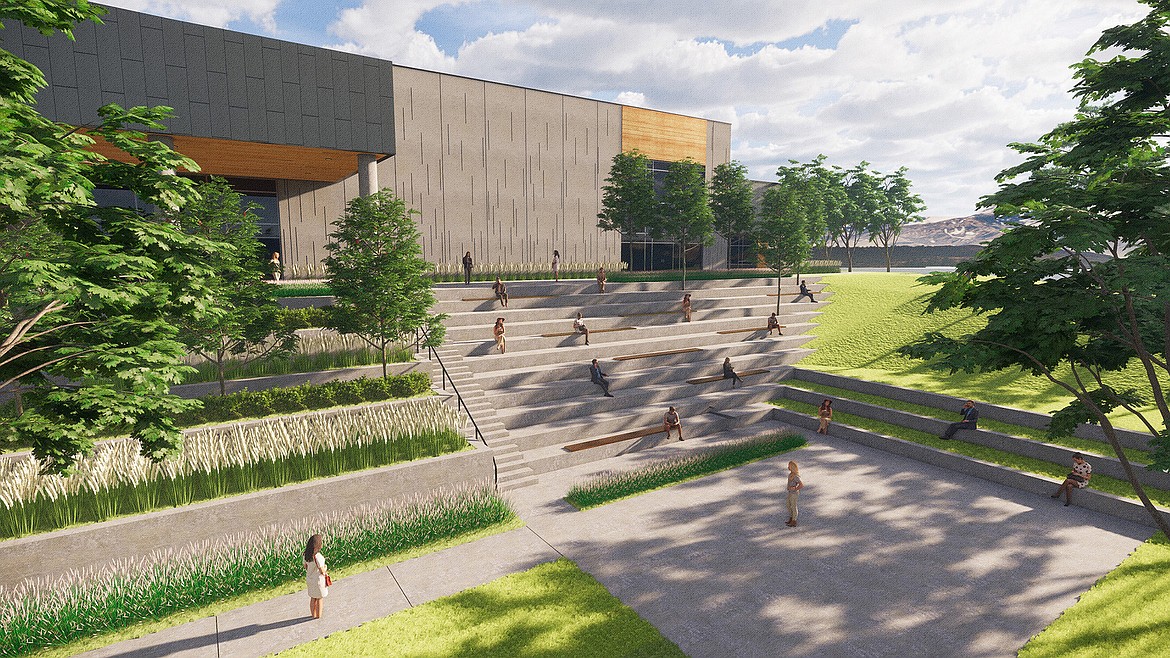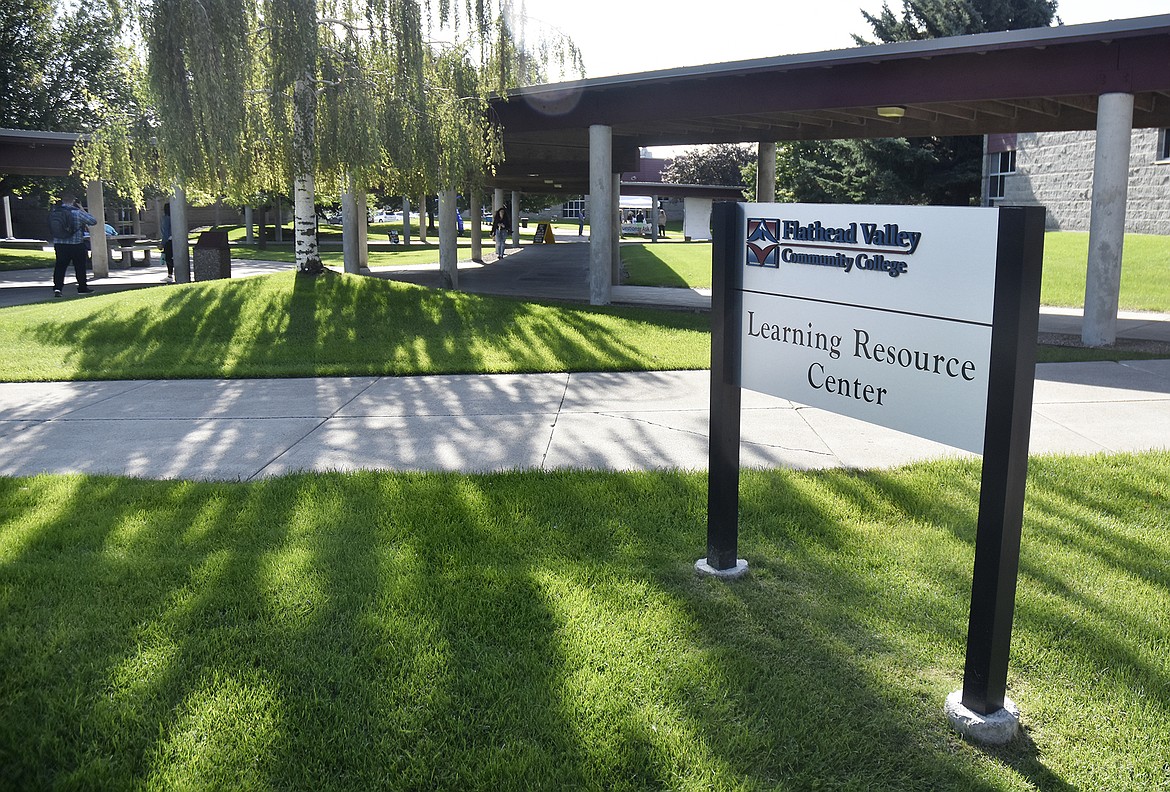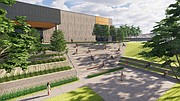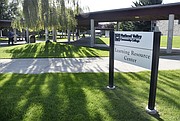FVCC serves students while looking toward future with new College Center
As the fall semester began last week at Flathead Valley Community College, a large-scale project expected to enhance student learning and provide greater opportunities for community usage continued to take shape on the edge of campus.
The college is in the midst of constructing the Paul D. Wachholz College Center. The $26-million building is set to include a gymnasium and fitness center, a 1,000-seat theater, small recital hall, classroom, art gallery, and beyond the walls of the building an outdoor amphitheater space. A soft opening of the building is expected in spring 2022, FVCC President Jane Karas said on a tour of the building.
“This will be a great opportunity for our students, for the college and for the community as a whole,” Karas said.
The college was able to raise $18 million and obtained a $9.75 million loan for the project. Swank Enterprises is the general contractor and Cushing Terrell is the architect.
“We raised $18 million in 18 months,” she noted. “That really demonstrates the need when we were able to raise funds that quickly and as the valley grows this will be even more important.”
The college is still fundraising for the center offering naming rights for seats in the theater and wings of the building.
Inside the College Center, the performance hall will become the home of the Glacier Symphony.
Karas says the benefit to the Flathead Valley as a whole will be the ability to host larger events such as concerts and bring in business conferences. The largest spaces in the Valley are currently the auditorium at Flathead High School with roughly 700 seats, and here the Whitefish Performing Arts Center with 450 seats followed by the O’Shaughnessy Center with 300 seats.
"Partnering with hotels and restaurants, especially during the shoulder season, to bring more people into the valley to stay here and help support our local economy is something we think is another benefit of this building," Karas noted.
AROUND CAMPUS last week there was excitement as students and staff returned to primarily in-person classes. In spring of 2020, the campus went to fully online courses, and the 2020-21 academic year followed with a mix of in-person and online courses in response to the Covid-19 pandemic.
Total enrollment at FVCC in the fall of 2019 was about 2,400 students, according to the National Center for Education Statistics. It remains to be seen how the pandemic and worker shortage might impact enrollment during this academic year.
“It’s always a challenge for community colleges when the unemployment rate is low,” Karas said. “I think we will be seeing more students, but they’ll be taking fewer credits. So many of our students need to work while in school and when people are working they just don’t have the time to take as many classes.”
FVCC has created programs designed to train students for careers in manufacturing or construction trades, and in health care thereby creating a pipeline of workers for local employers. But when certain industries like construction have a high need for workers wages for those jobs increase meaning that students often head straight from high school to work rather than seeking further education, she noted.
WHILE FVCC is looking toward the future of providing more opportunities for students with its newest building, the college is also making changes to better serve students now. This fall student support services — admissions, advising, financial aid, career counseling and tutoring — moved into the Learning Resources Center building providing easy access to all the programs. A large space inside the building that previously housed the library is also being converted into a lounge area designed to encourage students to gather, and student engagement programs like an outdoor family night are planned as a way to provide a community atmosphere for non-traditional students who have families.
Morgan Ray, who recently became the director of library services after serving as admissions coordinator for FVCC, says the college is focused on assisting students to be successful.
“We want students to have a community and be connected to campus,” she said. “We want students to have the Flathead community spirit. We’re really focusing on student engagement.”
These new programs and changes only add to the number of support services FVCC already has for students geared toward the classroom like free tutoring for those who qualify along with assistance in specific subject areas. But there’s also assistance for life beyond the classroom like a student food bank, mental health services and more recently through CARES Act funding related to the pandemic the college has developed a grant program to provide funds to students to be used for expenses such as purchasing a laptop for online classes, housing or childcare.
“We want to make sure our most vulnerable students are taken care of,” she said. “One of our goals is to make sure we’re serving students.”
FOUNDED in 1967 FVCC has continued to grow in enrollment numbers, and degree and certificate offerings have expanded. In fall of 1990, the college moved to its current 200-acre campus on U.S. Highway 93 on the north end of Kalispell.
Other major expansion projects on the current campus included the Broussard Center for Nursing and Health Science and library and learning commons that opened in spring 2013 and the student housing facility that opened for the fall 2017 semester.
Karas said the College Center will provide a space for students activities that have been limited by constraints of the college lacking its own gymnasium and having limited space for large events and gatherings.
“This addresses the needs of students and the needs of the community,” she said. “We have several intramural activities that don’t have a place to play and this provides greater opportunities for our students to participate in activities. This is really something that we’ve needed.”
She pointed out that the gymnasium space will also offer the opportunity for the college to more easily host larger events for the community such as its popular Festival of Flavors put on by culinary arts students. Previously when FVCC has hosted community lectures it’s been limited by the 300-seat capacity large community room in its Arts and Technology Building.
“When we had one speaker here, we probably had 600 people who came,” she noted. “We had people everywhere and it’s just not big enough. We want to be able to host the community for educational events like our honors symposium.”


